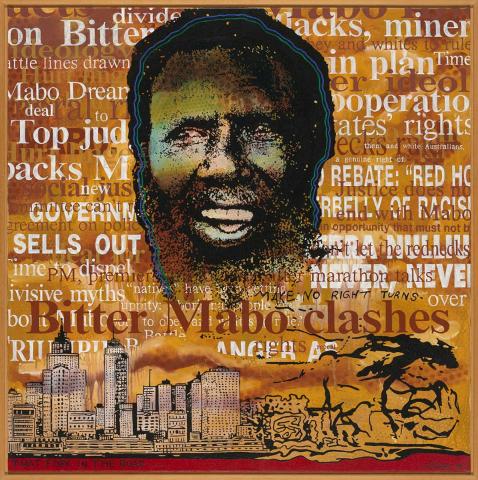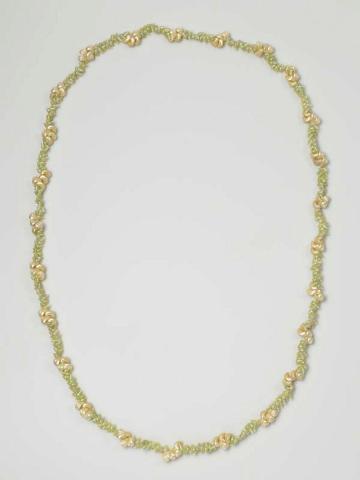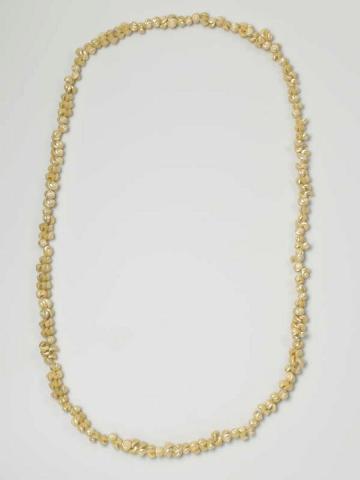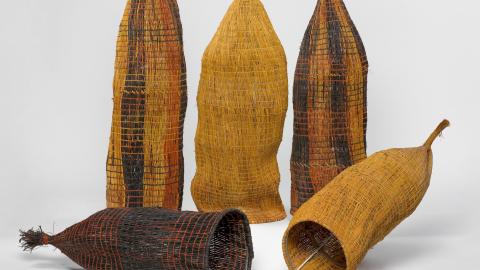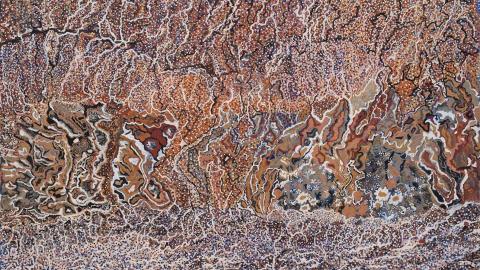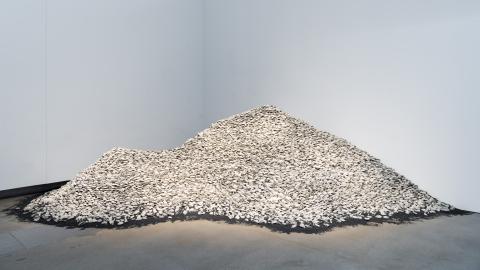SEA RIGHTS: Politics, lore and custom
‘Gone Fishing’
Waterways and seas are important resources that have sustained communities for millennia and carry important stories of creation. In the last century, the ‘ownership’ of such parcels of water — and the resources found within and below them — have been debated. Artworks within this room respond to current discussions around rising and warming seawaters, destruction of cultural sites, water contamination and Traditional Owners’ struggle to have the power under Native Title law to care for their Sea Country.
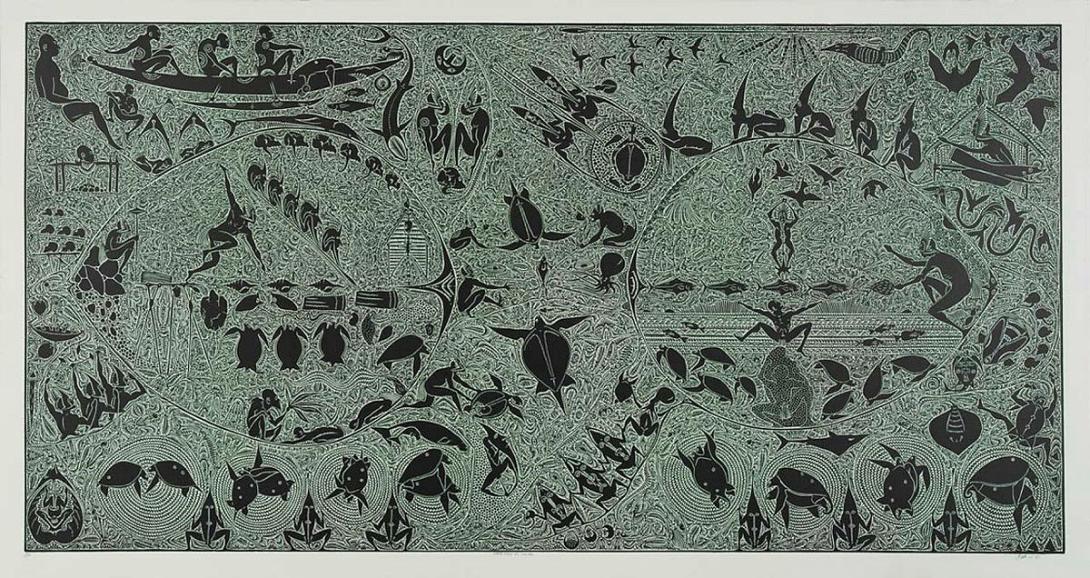
A series of sculptural works by Gail Mabo, daughter of Native Title activist Eddie Koiki Mabo (1936–92), refer to the maps her father made to form the basis of his famous landmark claim over Mer (Murray Island) in Zenadth Kes (Torres Strait Islands), which opened the door for other claims to be granted. In Wadth, Zigin ar Kusikus 2005, artist Alick Tipoti shares important cultural stories of a neighbouring island in the region, clearly affirming his family’s ongoing connection to Country — one of the many criteria for successful recognition of Native Title for communities across the continent.
Conversely, instances of large-scale pollution and destruction are examined in Judy Watson’s bloom 2009 (referring to blooming algae) and Quandamooka artist Megan Cope’s RE FORMATION 2016–19, which critiques early colonists’ extraction of lime from historic middens (towering, centuries-old mounds of discarded shellfish and molluscs) to use as building materials in early Brisbane City.
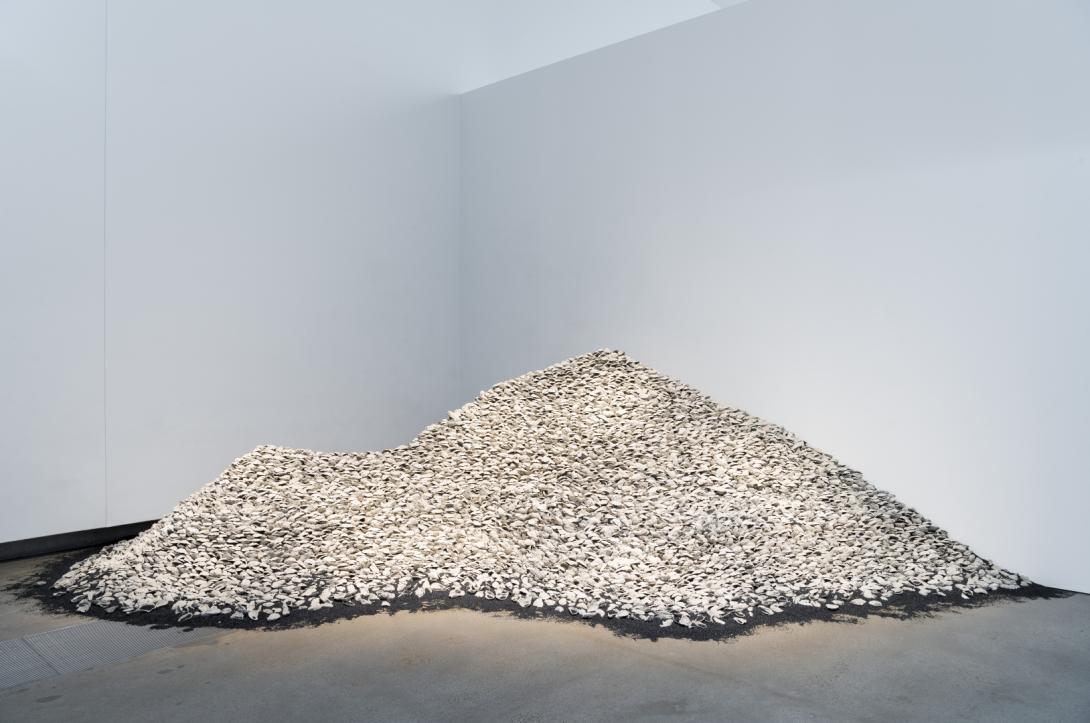
The celebrated Palawa necklace-making tradition of Lutruwita (Tasmania) is under current environmental pressure, as coveted green mariner shells become scarce due to warming waters. In this display, Pakana artist Andrew Gall’s 3D-printed porcelain and resin shells provide an option to artists who are no longer able to access these traditional materials. Here, they are shown with their natural material counterparts, made by senior women who have maintained this intricate weaving technique through teaching new generations.
Objects included in ‘Sea rights’:

Yalangbara c.1960
- MARIKA, Mawalan 1 - Artist
- MARIKA, Wandjuk - Artist
- GANAMBARR, Larrtjanga - Artist
- MARIKA, Nurryurrngu - Artist
- GANAMBARR, Mowarra - Artist
- GURRUWIWI, Mithinarri - Artist
- DHAMARRANDJI, Gungguyama - Artist
- YUNUPINGU, Munggurruwuy - Artist
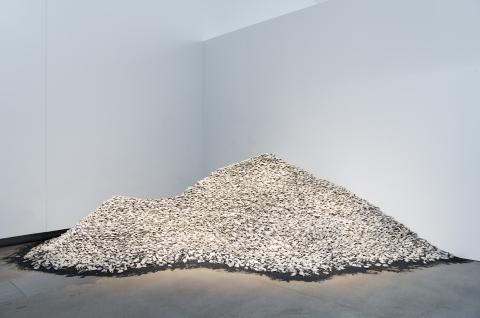
RE FORMATION 2016-19
- COPE, Megan - Creator

The Oyster Fishermen #1 2011
- FOLEY, Fiona - Creator

The Oyster Fishermen #3 2011
- FOLEY, Fiona - Creator

The Oyster Fishermen #9 2011
- FOLEY, Fiona - Creator

The Oyster Fishermen #10 2011
- FOLEY, Fiona - Creator

The Oyster Fishermen #11 2011
- FOLEY, Fiona - Creator

The Oyster Fishermen #13 2011
- FOLEY, Fiona - Creator

The Oyster Fishermen #15 2011
- FOLEY, Fiona - Creator

The Oyster Fishermen #16 2011
- FOLEY, Fiona - Creator

Green maireener necklace 2007
- GREENO, Lola - Creator

Tagai 2018
- MABO, Gail - Creator

Mabo Case 1 2018
- MABO, Gail - Creator

Mabo Case 2 2018
- MABO, Gail - Creator

Zenadth Kes 2018
- MABO, Gail - Creator

Wadth, Zigin ar Kusikus 2005
- TIPOTI, Alick - Creator

bloom 2009
- WATSON, Judy - Creator
